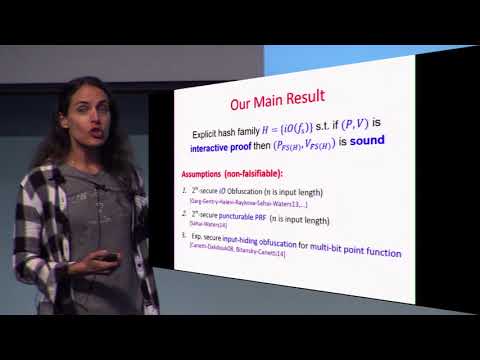Welcome to the resource topic for 2016/303
Title:
From Obfuscation to the Security of Fiat-Shamir for Proofs
Authors: Yael Tauman Kalai, Guy N. Rothblum, Ron D. Rothblum
Abstract:The Fiat-Shamir paradigm [CRYPTO’86] is a heuristic for converting three-round identification schemes into signature schemes, and more generally, for collapsing rounds in constant-round public-coin interactive protocols. This heuristic is very popular both in theory and in practice, and its security has been the focus of extensive study. In particular, this paradigm was shown to be secure in the so-called Random Oracle Model. However, in the plain model, mainly negative results were shown. In particular, this heuristic was shown to be insecure when applied to computationally sound proofs (also known as arguments). Moreover, recently it was shown that even in the restricted setting where the heuristic is applied to interactive proofs (as opposed to arguments), its soundness cannot be proven via a black-box reduction to any so-called falsifiable assumption. In this work, we give a positive result for the security of this paradigm in the plain model. Specifically, we construct a hash function for which the Fiat Shamir paradigm is secure when applied to proofs (as opposed to arguments), assuming the existence of a sub-exponentially secure indistinguishability obfuscator, the existence of an exponentially secure input-hiding obfuscator for the class of multi-bit point functions, and the existence of a sub-exponentially secure one-way function. While the hash function we construct is far from practical, we believe that this is a first step towards instantiations that are both more efficient and provably secure. In addition, we show that this result resolves a long-lasting open problem in the study of zero-knowledge proofs: It implies that there does not exist a public-coin constant-round zero-knowledge proof with negligible soundness (under the assumptions stated above).
ePrint: https://eprint.iacr.org/2016/303
Talk: https://www.youtube.com/watch?v=EckVqFAJjE0
See all topics related to this paper.
Feel free to post resources that are related to this paper below.
Example resources include: implementations, explanation materials, talks, slides, links to previous discussions on other websites.
For more information, see the rules for Resource Topics .
